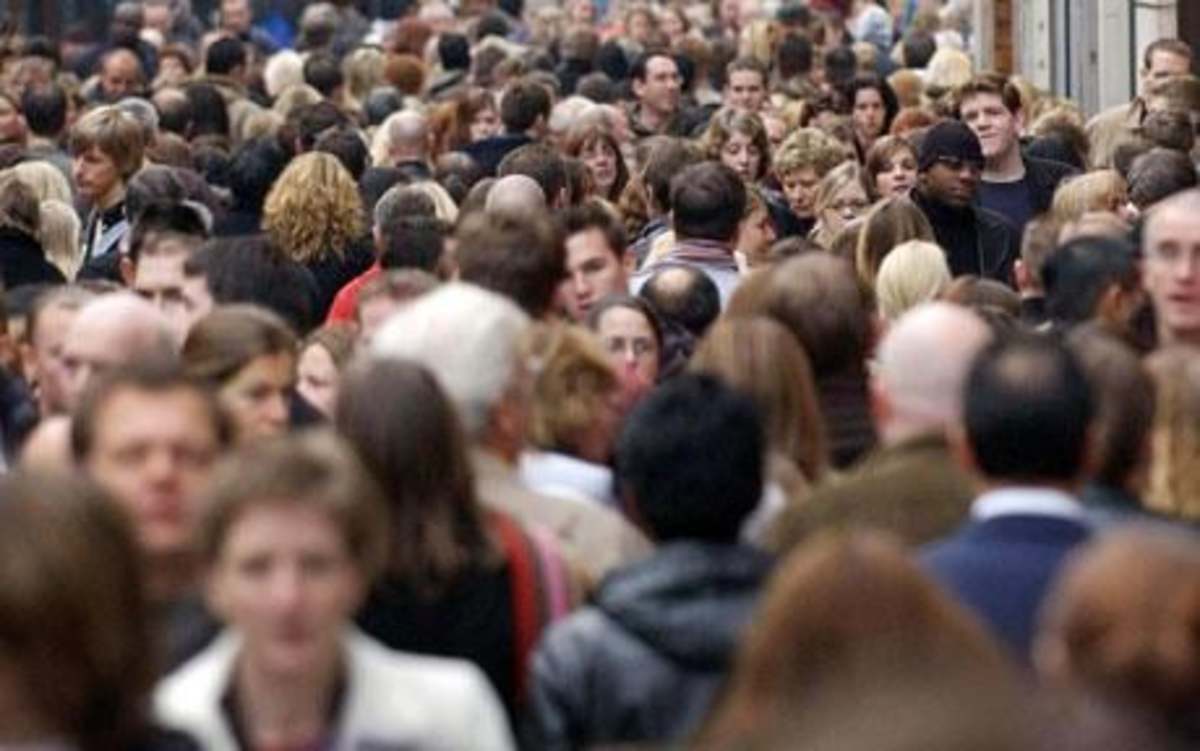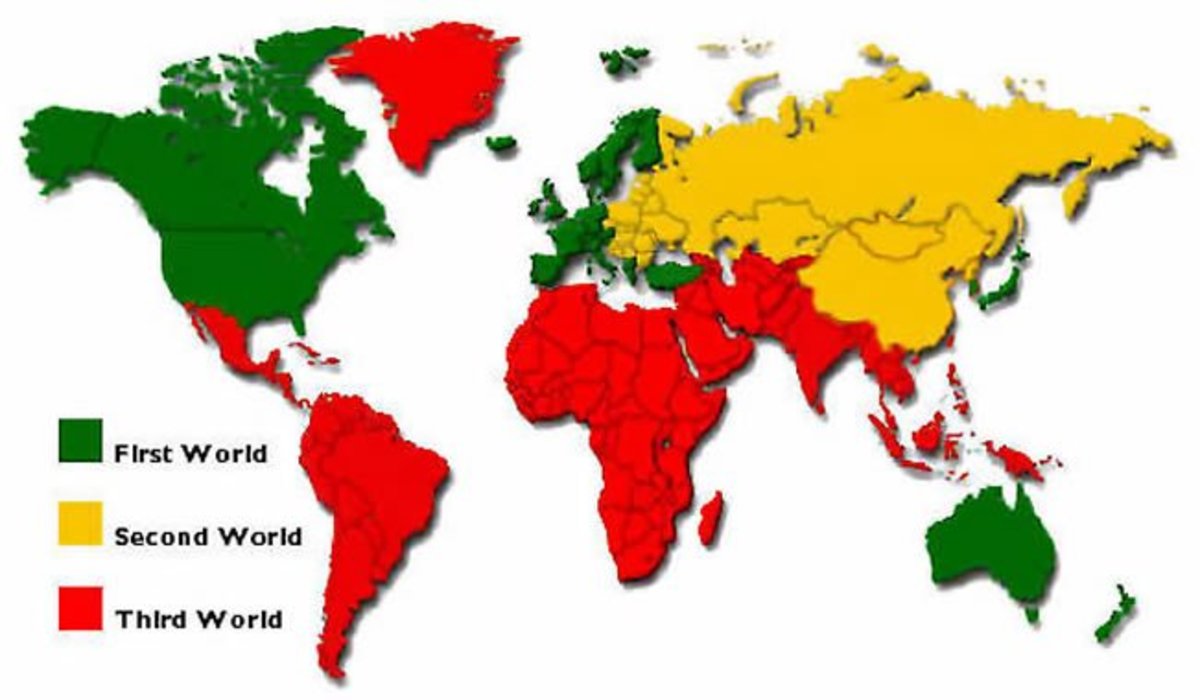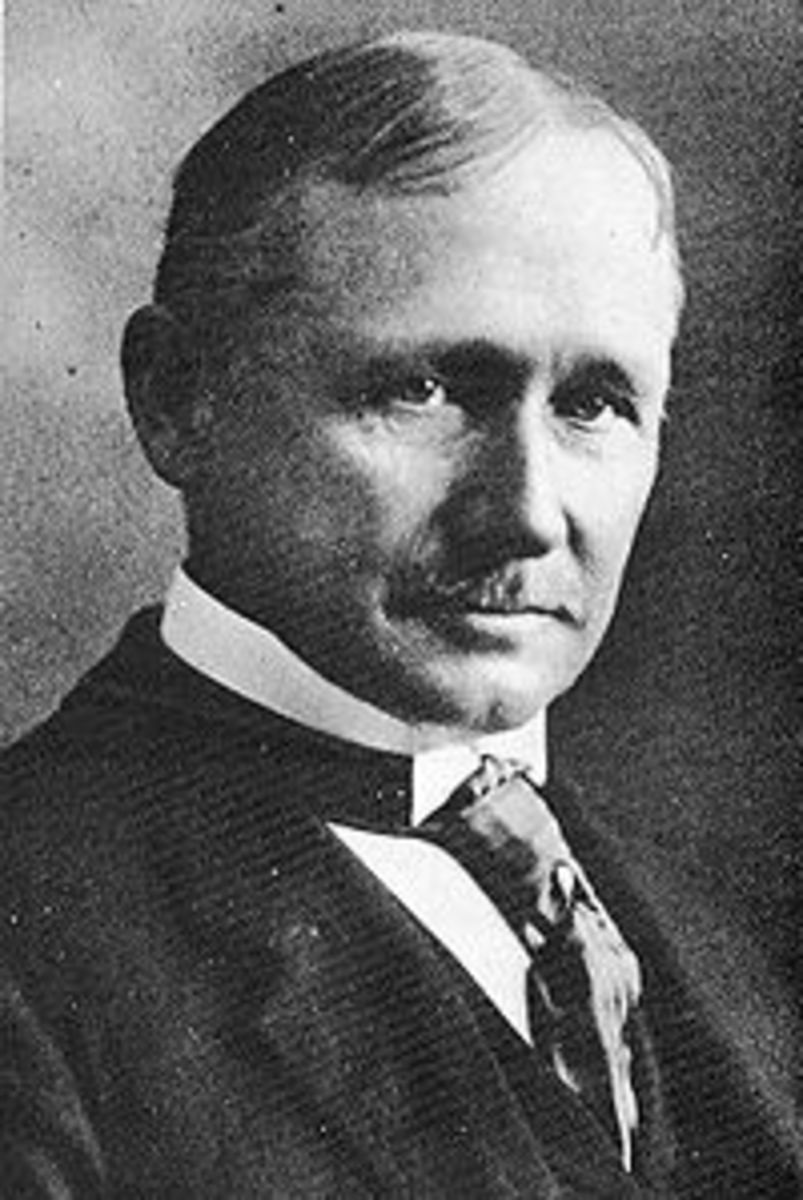Too Many People - Too Little Planet
Arguing that the entire world population could fit inside the state of Texas is a simple-minded blunder of the worst kind.
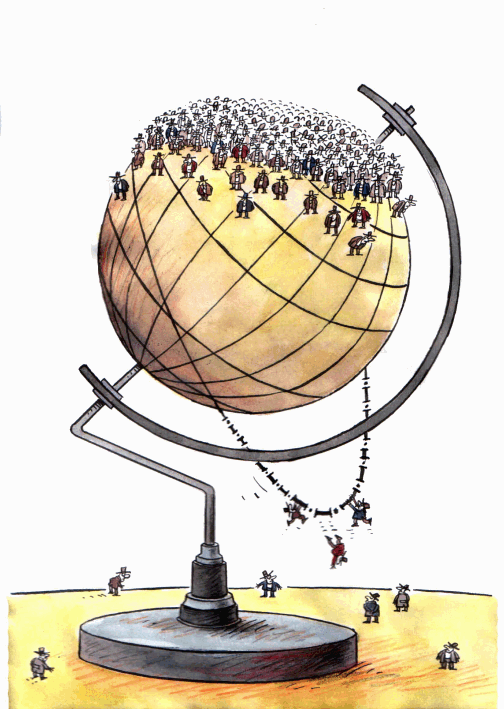
Dynamic Beings
Human beings are not static numbers that fit neatly into static theoretical spaces. We are dynamic organisms. Our existences extend beyond the boundaries of our anatomical flesh and beyond the fences of our property allotments. We move and travel. We escape, roam and migrate.
Even if some people never venture beyond certain stomping grounds, they imagine open land that could receive them, and they welcome the idea of space intervals that cushion them from other human clusters.
An individual human being also requires far more than a designated spatial area that contains his or her physiological form. Each human requires supporting lands for food production, product manufacturing, water treatment, transportation channels, communication infrastructure, power production and all the other requirements of a highly materialistic, consumptive species.
Aside from all this, space and time to traverse space are essential requirements of human consciousness – a consciousness that extends from biological make-up that has remained unchanged for over 200,000 years. Spaces to be different, spaces to disagree, and spaces to gaze into unpopulated expanses are as necessary for human consciousness as spaces to stand still.

Mathemagical Delusions
Jacqueline R. Kassun [1] is an example of someone who uses a mathematically logical argument to claim that human population growth is not a serious concern:
If you allotted 1250 square feet to each person, all the people in the world would fit into the state of Texas. Try the math yourself: 7,438,152,268,800 square feet in Texas, divided by the world population of 5,860,000,000, equals 1269 square feet per person. The population density of this giant city would be about 21,000 — somewhat more than San Francisco and less than the Bronx.
This argument magically squeezes all the world’s living human bodies into a small area, as if no further space is required to support them. This argument grossly underestimates additional surrounding space for utilities, commodities, transportation, communication and so forth.
As Colin D. Butler [2] points out:
Humans are neither computer ciphers nor caged mice. That is to say, while a given area might tolerate a theoretically higher density of human population than it does, the reality of human evolution in distinct groups, separated by culture, religion, and language, means that this theoretical maximum will rarely be attained. A degree of underused carrying capacity can be viewed as a desirable buffer around disparate groups, vital for reducing tension and preventing conflict.
Kassun, nonetheless, argues:
In fact, people do live in crowded conditions, and always have. We cluster together in cities and villages in order to exchange goods and services with one another. But while we crowd together for economic reasons in our great metropolitan areas, most of the world is empty, as we can see when we fly over it. It has been estimated by Paul Ehrlich and others that human beings actually occupy no more than 1 to 3 percent of the earth's land surface.
Martin Dak [3], however, points out that every reasonable place on Earth is populated today.
Kassun, thus, ignores the fact that not every place on Earth is suitable for human habitation. She continues to manipulate numbers in a misleading way, in the following argument:
Another fact: World population growth is rapidly declining. United Nations figures show that the 79 countries that comprise 40 percent of the world's population now have fertility rates too low to prevent population decline. The rate in Asia fell from 2.4 in 1965-70 to 1.5 in 1990-95. In Latin America and the Caribbean, the rate fell from 2.75 in 1960-65 to 1.70 in 1990-95. In Europe, the rate fell to 0.16 — that is, effectively zero — in 1990-95. And the annual rate of change in world population fell from 2 percent in 1965-70 to less than 1.5 percent in 1990-95.
Here what Kassun fails to clarify is that the population growth RATE seems to be declining. The actual NUMBER of people in the world is still increasing, just not quite as fast. Kassun also speaks of population decline as though this is a bad thing.
Gretchen Daily [4] and co-authors suggest an optimum world human population size of less than half of what it is now, which implies that a slowing of population growth RATE is a good thing:
An optimum population size is not the same as the maximum number of people that could be packed onto Earth at one time, nurtured, as they would have to be, by methods analogous to those used to raise battery chickens. Rather, almost everyone who puts value on human life appreciates the importance of quality of life. Obviously, many more human beings could exist if a sustainable population were maintained for thousands to millions of years than if the present population overshoot were to destroy much of Earth's capacity to support future generations.

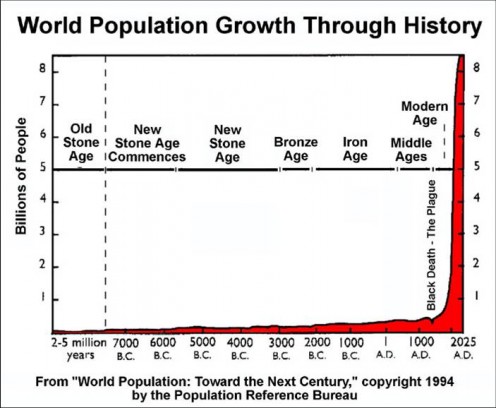
Mathematical Realities
As the number of humans on Earth has shot dramatically upwards over a short history, the building structures that house humans have also taken the form of dramatic upward-rising crates. Something seems askew with these disproportionate vertical climbs.

Why So Many So Quickly?
Advanced human intelligence still serves primitive drives and beliefs [5]:
- Humans have an inborn instinct to propagate themselves, which causes a sexual response that is all-powerful.
- Many humans equate the idea of reducing the number of people on Earth with the idea of death, fearing that if we are not expanding our numbers, then we are dying. Consequently, our prevailing culture continues to view limits on human growth as unthinkable or impossible.
- Human brains have evolved to deal with immediate crises only. Immediate impulses to procreate, prosper and increase personal power, therefore, continue to be the underlying drivers of modern civilization.
Cluttered Consciousness
As a civilization, we have become so accustomed to our dense-packing ways that many of us have lost touch with our physical bodies and behaviors. We are choking our very being with our close-packed housing, hostile traffic jams, and lifeless partitioning of lives into rigid compartments, which we then fail to keep in order. We, thus, clutter both our thoughts and our surroundings.

Congested Reflexes
A considerable number of modern people are fat, physically inactive, trapped and forever sedated by electronic distractions that create illusions of alternate realities. Meanwhile, flesh-and-blood bodies and behaviors extending from the foundations of flesh-and-blood bodies have deteriorated. Reflexes, reactions and reasoning, thus, are congested.
This state of affairs stems, not from lack of information, but from dominance of a culture that fails to support human movement, human behavior patterns and human spatial designs appropriate for healthy human bodies. Bodily ignorance and deteriorated reflexes feed back into the minds of those who design the architectural and political forms of future societies, which, in turn, foster restricted body awareness and further crowding.
Arguments like the one that places all the world’s people into the state of Texas follow as a pathological ideal ignoring the fundamental relationship between human beings and their world. Such arguments also illustrate the height of blind arrogance in believing that human beings have a sacred right to dominate the planet in as large a number as possible.
The Bottom Line
- Crowding and clutter are simply ugly. Past a certain population limit, the more humans in existence, the more of this sort of ugliness prevails.
- Human political and social systems cannot distribute wealth fairly, and this will not change. Past a certain population limit, the more humans in existence, the worse this disparity will be.
- Human political and social systems cannot elegantly manage exceedingly large numbers of people. Bureaucratic overload and governmental failure obviously increase, as the numbers of people increases past a certain population limit [6].
An optimum population on the planet encourages more resources for fewer people, where each individual has greater significance and purpose in society, greater space to benefit from other species of life, and greater opportunity to explore the full potential of being alive.
REFERENCES
1. Jacqueline R. Kasun (1998), Too Many People?, ENVOY [website]
http://www.catholiceducation.org/articles/population/pc0001.html
.
2. Colin D. Butler (December 2004), Human Carrying Capacity And Human Health, PLoS MED, [published online]
http://www.ncbi.nlm.nih.gov/pmc/articles/PMC539046/
.
3. Martin Dak (30 April 2010), Causes And Consequences Of Overpopulation, LUCID PAGES [website – Charles Sander, publisher]
http://www.lucidpages.com/doom.html
.
4. Gretchen C. Daily, Anne H. Ehrlich, and Paul R. Ehrlich (1993), Optimum Human Population Size, RACE, POVERTY AND THE ENVIRONMENT [online journal]
http://www.urbanhabitat.org/node/955
.
5. CANADIAN ASSOCIATION FOR THE CLUB OF ROME PROCEEDINGS,
ANALYSIS OF THE HUMAN PREDICAMENT, Series 3 / Number 8 (May 2006)
http://www.clubofrome.at/news/sup2006/dl_cacor_proceedings_may_06.pdf
.
6. Charles C. Mann (February 1993). How Many Is Too Many, THE ATLANTIC MONTLY, vol 271, no 2, p 47 - 67
http://www.theatlantic.com/past/issues/93feb/mann1.htm
.



